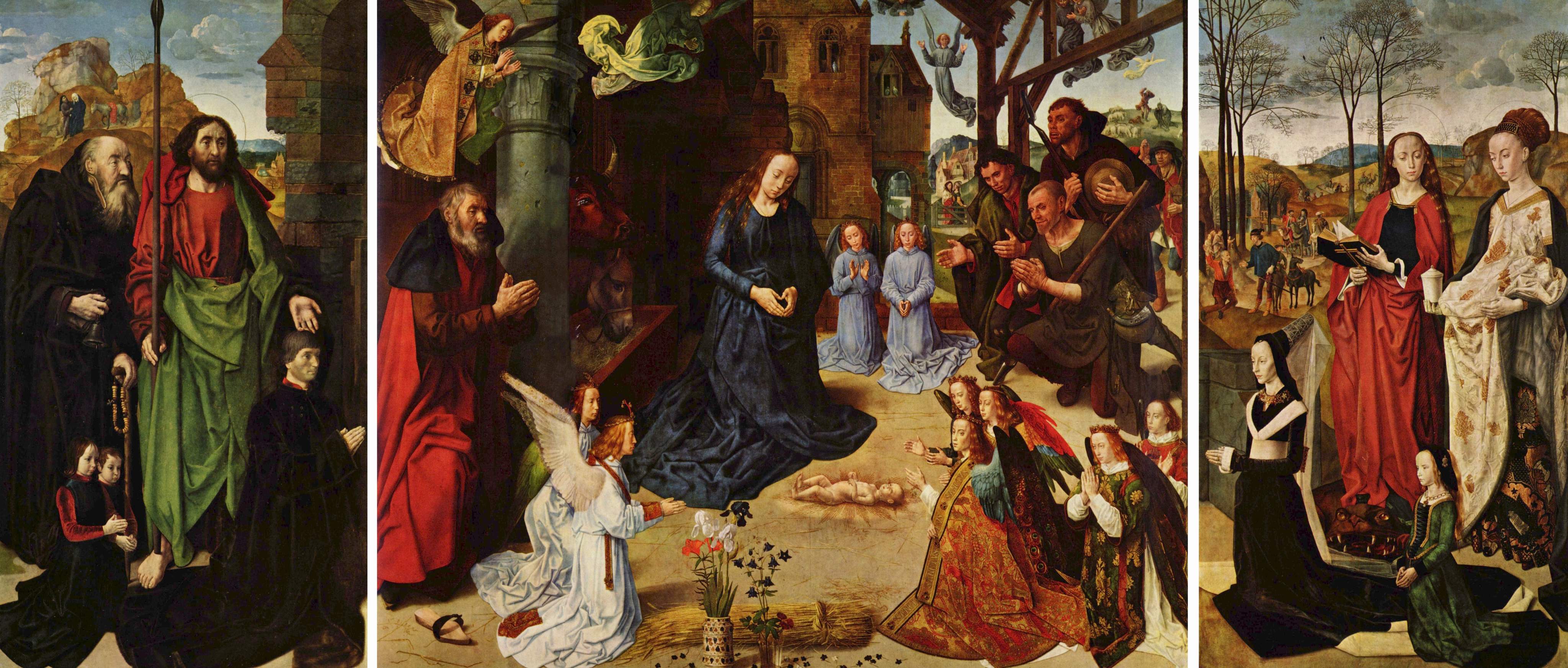- Portinari Triptych
Infobox Painting|

title=Portinari Triptych
artist=Hugo van der Goes
year=c. 1475]
type=Oil on wood
height=253
width=588
city=Florence
museum=Galleria degli Uffizi The Portinari Triptych (c.
1475 ) is an oil on wood painting by the Flemish painterHugo van der Goes representing theAdoration of the shepherds .The work was commissioned for the church of the hospital of Santa Maria Nuova in
Florence by the Italian bankerTommaso Portinari , who lived for more than forty years inBruges , as a representative for theMedici family's bank. Portinari himself is depicted on the left panel with his two sons Antonio and Pigello; his wife Maria di Francesco Baroncelli is shown on the right panel with their daughter Margarita. All, except Pigello, are accompanied by their patron saints: Saint Thomas (with the spear), Saint Anthony (with the bell),Mary Magdalen (with the pot of ointment) andSaint Margaret (with the book and the dragon).On the central panel, three
shepherd s fall on their knees for the childJesus . Van der Goes painted these rustic characters very realistically. Kneeling angels surround the Virgin and the Child, which is not in a crib, but lies directly on the ground, surrounded by anaureole of golden rays. This unusual representation of the adoration of Jesus is probably based on one of the visions ofSaint Bridget of Sweden .In the background, van der Goes painted scenes related to the main subject: on the left panel, Joseph fleeing to
Egypt with his pregnant wife; on the central panel (to the right), the shepherds visited by the angel; on the right panel, theThree Magi on the road toBethlehem .The lovely
still life in the foreground, with the two vases of flowers and the sheaf of corn, probably allude to the Eucharist and the Passion. The corn refers to the Last Supper, where Christ broke the bread. The orange lilies symbolize the Passion and the white irises purity, while the purple irises and the columbine stalks represent the seven sorrows of the Virgin. Thus, this scene of the birth of Jesus prefigures the Salvation by his death.When the work arrived in Florence in
1483 , it was deeply admired by the Italian artists who saw it, many of whom sought to emulate it. A good example is the "Adoration of the Shepherds" (1485 ) whichDomenico Ghirlandaio painted in theSassetti Chapel in the church ofSanta Trinita in Florence. However, the naturalistic depiction of the shepherds is already present inAndrea Mantegna 's "Adoration of the Shepherds" (Metropolitan Museum,New York ), which dates from around1450 .
Wikimedia Foundation. 2010.
